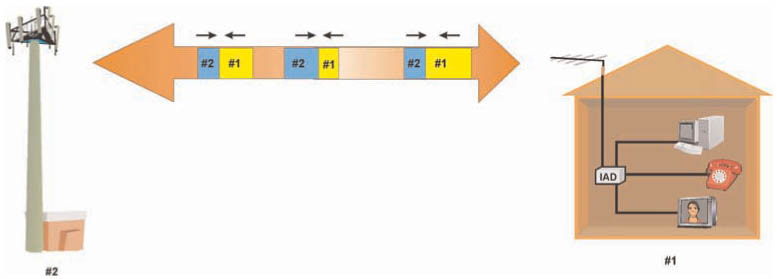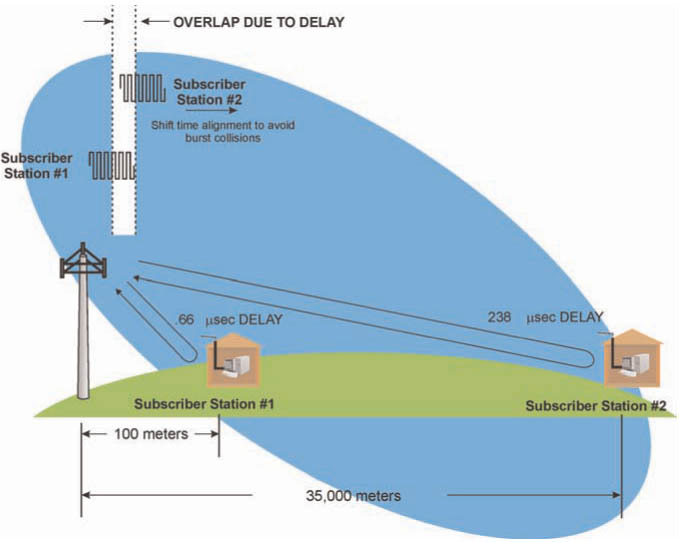Ranging is a dynamic time alignment process that allows a radio system base station to receive transmitted signals from mobile communication devices in an exact time slot, even though not all mobile communication devices are the same distance from the base station. Ranging keeps different mobile device transmit bursts from colliding or overlapping. Ranging is necessary because subscriber stations may be moving or have been moved, and their radio waves’ arrival time at the base station depends on their changing distance from the base station. The greater the distance, the more delay in the signal’s arrival time. Transmission delay is approximately 3 microseconds per km (or 5 microseconds per mile). To perform time alignment, a subscriber station can advance or delay its transmission timing relative to the reference message that it receives on the downlink channel.
The WiMAX system uses two types of ranging: initial ranging and periodic ranging. During initial ranging, the WiMAX subscriber station transmits a brief ranging request message that allows the system to send back a ranging response message with the amount of timing offset that the subscriber station must use when it begins transmitting. After the subscriber station has attached to the system, the base station will continually send time alignment messages (periodic ranging) to the subscriber station to adjust (fine tune) its timing advance as it moves in the radio coverage area.
Initial ranging is the process of time aligning with a communication system before establishing a communication session. The initial ranging process involves synchronizing to an incoming transmission channel, sending a request at a particular time interval relative to the received channel and obtaining a response that allows for the time synchronization with the device or system.
Periodic ranging is the process of continuous time alignment with a communication system during a communication session. The periodic ranging process involves maintaining synchronization with an incoming transmission channel, periodically transmitting messages (such as sending user data) and receiving time alignment information from the other device or system.
If the subscriber station is continually communicating with the base station (receiving or transmitting data), the system can sense changes in the timing and send time alignment messages along with other packets of data to the subscriber station. If a significant amount of time has elapsed since a subscriber device has communicated with the system, the BS must initiate polling requests to reinitiate the ranging process.
Figure 2 shows how the relative transmitter timing in a subscriber station (relative to the received signal) is dynamically adjusted to account for the combined receive and transmit delays as the WiMAX radio is located at different distances from the base station antenna. In this example, the subscriber station uses a received burst to determine when its burst transmission should start. As the subscriber station moves away from the tower, the transmission time increases therefore causing the transmitted bursts to slip outside its time slot when it is received at the base station (possibly causing overlap to transmissions from other radios.) When the base station receiver detects the change in slot period reception, it sends commands to the subscriber station to advance its relative transmission time as it moves away from the base station and to be delayed as it moves closer.





No comments:
Post a Comment